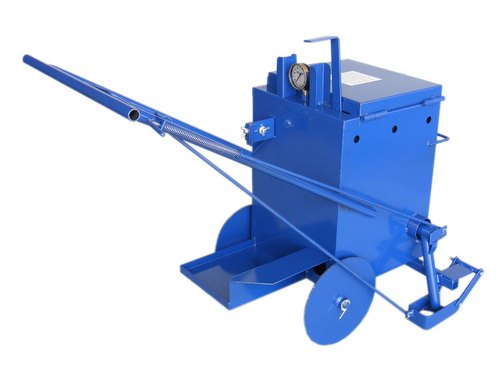How to Manage Payroll for Your Small Business

Accurate and timely payroll is crucial for small businesses, and a well-managed system can prevent costly IRS and state penalties.
Establish a good payroll system by deciding which parts to manage internally and which parts to outsource. To ensure accurate payroll processing, keep employee records and hours up-to-date to ensure a smooth process.
Decide what to manage in-house
Business owners don’t need to manage payroll manually; AI can help ensure accuracy without taking up valuable time. In the US, nearly half of small businesses use payroll services
Professional payroll help is a lifesaver for small businesses, providing legal guidance and expert knowledge in the complex world of payroll. Professionals such as CPs, CPAs and bookkeepers can help with complex payroll tasks. You must still review and approve payroll, even with outside help, ensuring the information given to the provider is up-to-date and correct.
Payroll software can improve the efficiency of payroll tasks and reduce the chance of errors. Your employer may offer products that handle payroll tax filing and payments, but you’re ultimately responsible for the money.
Keep up-to-date employee records
Up-to-date records make it easy to manage payroll for your employees. Please have your employees update their contact information with the proper channels in order to ensure compliance.
Employees should be updated on how to update information for payroll. If they have an employee portal or paper form, the changes can be noted.If your software features an employee portal, you’ll likely be notified of the change automatically. However, if employees hand you a printed form, it will take manual processes to update their records.
Keep an eye on payroll tables and make sure that you are not paying employees out of the wrong payroll table.
Avoid being penalized by using payroll systems that have a built-in service to avoid penalties. When you hire new employees, be sure to check their expiration date so that necessary actions are taken. Companies may only have the rights to keep a temporary worker in their employment until the expiration date.
Track employee hours
The best tracking methods for hourly employees can be determined by what works best for your business. You should track the number of hours worked on a daily, weekly, or monthly basis.
Many products offer integrations with time-tracking apps or include time-tracking features which some are available for a fee. You should be aware that you’ll also need to use a paper time sheet or use your own timer to make sure you’re tracking your work hours accurately.
Steps in the payroll process
Employees need to be paid at the beginning of each payroll period. The process varies by company, but it’s generally not necessary to send paper checks as they are usually accepted electronically. In some cases, direct deposits are used for monthly paychecks that employees will withdraw from their bank accounts.
1. Calculate employee gross and net pay amounts
You need to figure out how much people are bringing home each week or month. You would then calculate the gross pay or total earnings of the person for the period with this information in mind. Gross pay is a combination of several different types of pay that companies offer their employees. A gross pay is the total amount of pay a worker gets at the end of the work week before any deductions
Many employers use take-home pay to determine how much they are paying for an employee, but there are other factors like overhead, payroll taxes, and profit. It includes both normal earnings and overtime pay. Employee advances may be deducted from the paycheck when an employee is on layoff, there’s a large bonus at stake, or taxes are due.
2. Reconcile payroll
Reconciling your work means making sure that the work you do and the pay you are expected to receive, match. Payroll is a process that helps an office or company identify unusual activity, such as spending beyond income. Reconciling your payroll information before filing quarterly taxes is a good practice.
The company’s employees get paid rates that are competitive with others in the industry. Tips are reviewed, but overtime is not an issue for the hours worked by shift workers. Automatic spell checkers are able to catch many mistakes that can be difficult for a human to spot.
3. Run payroll
Running payroll is one of the many tasks that an HR team needs to do. It entails approving direct deposits and the preparation of checks. Direct deposit may take up to a few days for an employee’s paycheck to go into their account. Some payroll companies offer same-day or next-day direct deposit, while others require a longer wait. This statement is unreliable because it is unclear how long it will take to finish the payroll.
4. Make tax and benefits payments
Employers are required to contribute a certain amount of Social Security and Medicare taxes to prevent withholding, while employees must pay them. When employees are taxed, their employer must also pay a tax to ensure everyone is on equal footing.
You may deposit up to four quarters worth of taxes into this system each year. The process for withholding state taxes varies by state.
Managing benefits can be difficult, but it’s time has been reduced with the help of payroll services. Or, Your employees are covered by their benefits, and that starts with timely payments. Whether you’re an HR manager or a payroll administrator, you’ll have to make sure that your employees get the coverage that they’re eligible for.
5. Save your records
There are numerous state and federal laws about the recording of employee wages. Businesses have to comply with these employment and payrolltax regulations for the records of their employees to be legal.
The federal government recommends storing records for tax purposes by fiscal year. You should also be careful to avoid flooding and other threats. You should check the state laws to keep records in compliance with the laws. Files can be backed up on a separate device or service.



